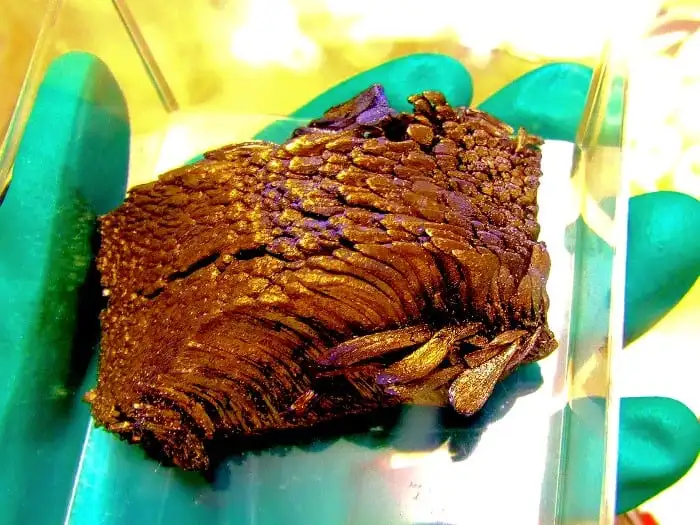10. Tungsten Carbide
Tungsten carbide, the hardest metal used for wedding rings, has gained a lot of popularity over the years. There are several reasons for this, the most prominent of which is the low cost when compared to rings made of precious metals. This material, a tungsten-carbon alloy, is often used for cutting-edge equipment like knives, circular saw blades, and drill bits. Tensile strength for tungsten and its alloys range from 500 to 1,050 MPa, while yield strengths for same materials range from 300 to 1,000 MPa. Tungsten carbide rings come in a wide range of sizes and forms. Tungsten is one of the toughest metals on the planet, therefore it’s a top priority when it comes to making a scratch-resistant wedding band.
9. Stainless Steel
It’s another one of those unique and commonly utilized alloys. It is mostly made up of magnesium, steel, and chromium. Amazing properties, such as superior corrosion resistance, are made possible by the blend. As a result, the material’s characteristics make it ideal for turning and milling operations. Stainless Steel is a material that is highly resistant to corrosion. This material has a yield strength of 1560 MPa. It can withstand a tensile force of 1600 MPa. Stainless steel has a strong resistance to impact. On the Mohs scale, this metal may have a score of 5.5 to 6.3.
8. Steel-Iron Nickel Alloy
Both iron and nickel are thought to be the most prevalent metals in meteorites and the earth’s dense metal cores. There are just a few alloy combinations available on the market. Furthermore, combining carbon steel with a steel-iron nickel alloy can significantly boost the yield and tensile strengths of conventional carbon steel. For even better results, combine this combination with other metals. The yield strength of steel-iron nickel alloy is 1,420 MPa, and the tensile strength is 1,460 MPa.
7. Magnesium Alloys
The list of strongest metals would be incomplete without the mention of magnesium alloys. Surprisingly, scientists are experimenting with different magnesium alloys to create new alloys. Magnesium alloys have long been regarded as the world’s lightest and strongest metals. Magnesium alloys are lighter than aluminium alloys and stronger than titanium alloys, for the record. If this metal is used in the car industry, it might save 40% on fuel without requiring engine modifications.
6. Vanadium
Vanadium is a soft, uncommon, ductile metal that is normally found in a greyish white color. Vanadium is one of the world’s strongest metals. It’s mostly used to make specific alloys. Because of its lovely colors, it was called after Vanadis, the Norse goddess of beauty. Vanadium is widely utilized in jet engines and high-speed airframes, as well as axles, crankshafts, gears, and other important components when mixed with aluminum in titanium alloys. It’s also utilized in medicine as a supplement. Furthermore, the biggest vanadium resources are found in South Africa and Russia.
5. Carbon Steel
For ages, carbon steel has been one of the most extensively used alloys. This alloy is made up of carbon and iron, and the combination provides unrivaled stress resistance. It is fair to say that we are overawed by the number of goods that use carbon steel as a primary component. The following are the most important characteristics of carbon steel. This alloy has a yield strength of 260 MPa. It has a 580 Moa tensile strength. On the Mohs scale, this alloy has a Mohs rating of 6. The material is extremely impact-resistant.
4. Inconel
Inconel is a nickel-chromium superalloy made of austenite. It is notable for its tremendous strength, which does not deteriorate at high temperatures. It’s also resistant to oxidation and corrosion. The characteristics of Inconel make it appropriate for use in harsh situations. Gas turbine blades, well pump motor shafts, chemical processing factories, and nuclear-powered water reactors all employ it. It can withstand tensile forces of up to 1,103 MPa and yield forces of up to 758 MPa.
3. Titanium
Titanium is also one of the strongest metals and one of the most commonly used in the aerospace sector. The yield strength of pure titanium is lower, ranging from 275 to 580 MPa. It’s for this reason that titanium is often alloyed to make stronger versions. It possesses the following characteristics: The tensile strength of this material is 980 MPa. On the Mohs scale, it is a 6 on the hardness scale. Titanium alloys have yield strength of up to 1200 MPa.
2. Chromium
Due to its brittle nature, it is frequently difficult to utilize without alloying it with other metals to strengthen it and achieve the appropriate variations. Chromium, on the other hand, is a lustrous metal that is claimed to be among the strongest, making it ideal for electroplating. Chromium has a tensile strength of 418 MPa.It has a 316 MPa yield strength. The Mohs hardness scale gives it a score of 9.
1. Tungsten
The name tungsten is derived from the Swedish word tungsten, which means “heavy stone.” It is a rare metal that can be found naturally on the surface of the Earth. It was discovered as a new element in 1781 and separated as a metal for the first time in 1783. It’s known for its toughness, and it has the highest melting point of any element ever discovered, at 3422 °C. At 5930 °C, it also has the highest boiling point. It also has a density of 19.3 times that of water, which is significantly higher than leads. It is the heaviest element known to be essential to any living entity, yet it can interfere with the metabolism of molybdenum and copper, making it poisonous to animals.
